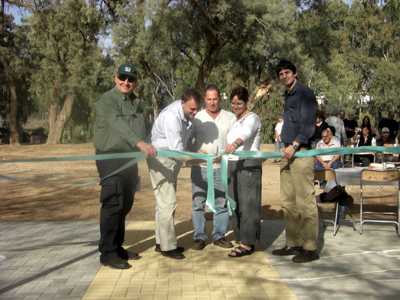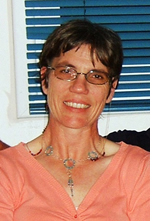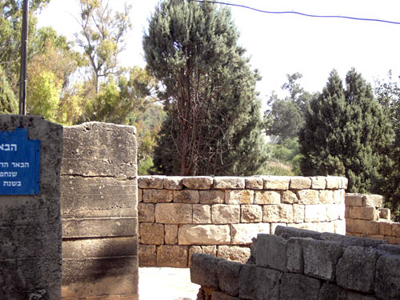 RIBBON CUTTING—Ruthie Goltz and representatives of JNF,
RIBBON CUTTING—Ruthie Goltz and representatives of JNF,
Sha’ar Hanegev municipality, and the Ministry of Tourism
cut the ribbon in front of the renovated area at the site of the
first settlers of the Negev.
___________________________________________________________
By Ulla Hadar
 KIBBUTZ RUHAMA, Israel–On the first day of Chanukah, in December 1911, Ruhama farm was founded on lands acquired by the”Rest of Israel” organization of Moscow.
KIBBUTZ RUHAMA, Israel–On the first day of Chanukah, in December 1911, Ruhama farm was founded on lands acquired by the”Rest of Israel” organization of Moscow.
During the first World War, Ruhama settlers were arrested and expelled to Beer Sheba and the farm was destroyed.
Reconstructed in 1920 , it was abandoned on the eve of the 1929 Arab riots. Reconstructed again it was destroyed a third time in the 1936 riots. During Chanukah 1943 Ruhama lands became a Hashomer Hazair kibbutz called “Amal”.
On the eve of the War of Independence, the wadis (river valleys) on Ruhama lands served as a centre for “Haganah” military drills. These activities led to a British siege and to a search for weapons from the 28th of August to the 2nd of September 1946.
During the War of Independence, Ruhama along with its neighbors Kibbutz Dorot and Kibbutz Nir Am, served as a centre for the Palmach units and headquarters when the Negev was besieged by the Egyptians.
Monday the 28th of December 2009, almost 100 years after and only few days following Chanukah festivities, a small crowd gathered at the site of “The First Jewish Zionist settlers in the Negev” for the inauguration of several improvements.
 Site of the first well in Ruhama
Site of the first well in Ruhama
The site is situated at Kibbutz Ruhama, a kibbutz that today is part of the Sha’ar Hanegev municipality, bordering Gaza. With the approval of the Ministry of Education and a national organization for historic sites, a community educational center here will tell the story of settlement in this “Gateway to the Negev.”
A special entrance and parking for disabled is a feature of the site, which is within the boundaries of “Park Shikma.” The park area includes several of the kibbutzim from the Shaar Hanegev municipality.
Ruthie Goltz, a native of Kibbutz Ruhama, is in charge of the project. She retired two years ago and volunteered for this project because it is “an asset to the community and the place where I live and that I love very much”
She added: “Three times the kibbutz was built and destroyed between the years 1912-1944.It was rebuilt a fourth time and today our community still stands strong and proud. The site is part of the kibbutz history but more so also part of the history of Sha’ar Hanegev and Park Shikma”.
*
Hadar is Sha’ar Hanegev bureau chief for San Diego Jewish World. She may be reached at hadaru@sandiegojewishworld.com